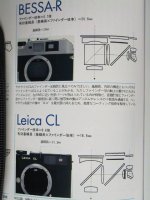W
wlewisiii
Guest
Patents still only last 17 years (IIUC) unlike the recent rape of copyright laws. There is no licesnse needed to use the M mount any more. All any manufacturer needs is a copy of the original patent and, if they did it correctly in the first place, the mount should be easy to duplicate.
William
William


